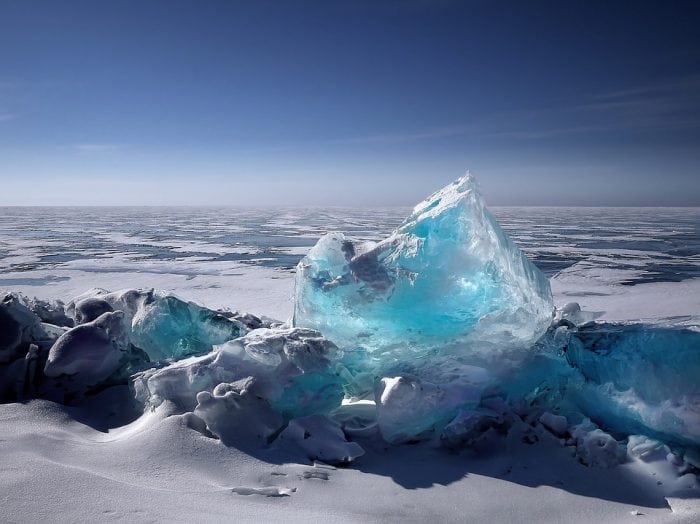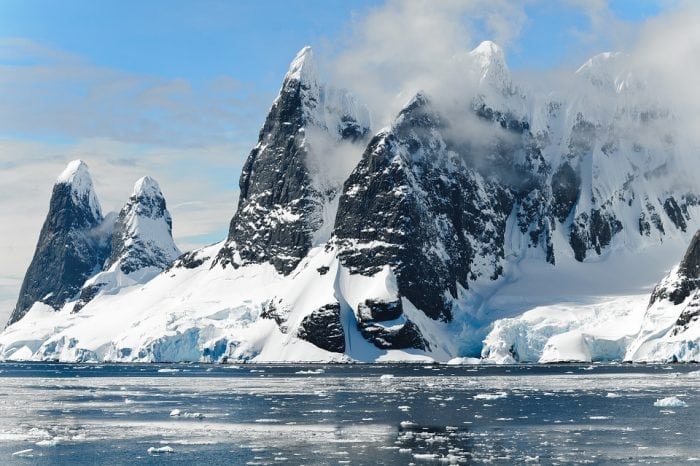
Some of the largest cities in the world are struggling with drought and a shortage of potable water. For instance, Cape Town South Africa has been facing an ongoing water crisis as a result of a years-long drought that threatened to push the city towards a “Day Zero” where the city would be forced to shut off its taps.
Yet it isn’t just Cape Town dealing with water shortages, Bangalore, India and Miami, Florida, are also struggling with shortages of drinking water. In order to combat this lack of potable water, an engineering firm based in the Middle East is considering the towing of large icebergs from Antarctica to drought-stricken areas of the world where the icebergs would be used to supply them with much needed fresh water.
Testing Towing Techniques
The idea of towing icebergs from Antarctica to regions suffering from drought has been discussed since approximately the 1970s, though few companies have taken the idea seriously until now. Abdulla Alsheshi, the founder of the firm based in the United Arab Emirates, the National Advisor Bureau, explains that if the project ends up as a success it could solve one of the world’s emerging problems before it gets much worse. Alsheshi says that current figures suggest that around 1.2 billion people lack access to clean water and that by the middle of the 21st century 50% of the world will have water supply problems.
“So if we can show this is viable, it could ultimately help not only the UAE, but all humanity,” says Alsheshi.

Photo: 8moments via Pixabay, CC0
The company is planning on conducting a pilot study this November. The National Advisor Bureau will be utilizing satellites to detect potentially suitable icebergs within the Southern Ocean. After a suitable target iceberg has been identified, the iceberg will be lashed to a small fleet of boats that will tow the berg approximately 4000 miles to either South Africa or Australia, depending on where the iceberg is initially located. The water obtained from this iceberg will be sold off to the government of the country it lands in, and then the company will follow this attempt by trying to bring a second iceberg to the UAE, approximately 8000 miles from the Southern Ocean. The UAE itself is having a water shortage issue.
If these pilot tests are successful then the project could begin as soon as next April, with the goal of providing drinking water to the UAE. The project will be funded to the tune of $60 million by private investors. Alsheshi then wants to expand the project and bring the icebergs to regions of the world who need water. Alsheshi says that while the product will initially focus on countries like Saudi Arabia, India, and South Africa, the entire world is in need of fresh water.
Yet Alsheshi Isn’t the only one considering such a project. Other entrepreneurs and engineers throughout South Africa, France, and Norway are also endeavoring to raise funds for their own iceberg towing missions, planning on moving an iceberg to Cape Town. Cape Town only just averted a major crisis after severe water usage restrictions were placed on the public. Experts from these countries are currently hoping to obtain an agreement with the South African government and secure funding for their own projects.
Logistical Challenges
The icebergs that would be towed by the project weigh around 100 million tons and measure around 7000′ x 2000′. These massive icebergs are far too large for even a fleet of vessels to tow all that way by themselves, so the plan aims to make use of ocean currents to boost the rate of movement and complete the journey quicker. Current estimates imply that such an iceberg could be towed to its destination at around 1.5 miles an hour, and at that plodding pace it would take approximately 11 months to reach the UAE.

Photo: girlart39 via Pixabay, CC0
Alsheshi and the National Advisor Bureau haven’t stated exactly how water would be extracted from the iceberg once it reaches the UAE, though the general idea is that the iceberg will be cracked into many pieces, chiseled off bit by bit and loaded into tanker ships which would take the ice to shore and the liquid water that results from the ice melting could then be purified. The purified water would then be sold to water companies and government agencies.
Some researchers are worried that the icebergs could essentially disintegrate along the journey, falling into pieces as it melts. Even if this doesn’t happen, a large amount of iceberg would inevitably melt during the course of the journey. A glaciologist from the University of Washington, Nick Holschuh, expressed concerns over the plan. Holschuh says that to transport such a large amount of ice over such a distance is a major logistical challenge.
Not only will the boats towing the glacier have to deal with the loss of ice as it melts, they will have to find a way to keep the structural integrity of the iceberg intact and prevent it from breaking up as the surface melt continues. Any weaknesses that initially existed in the iceberg’s structure will be exacerbated by exposure to warm ocean water and will affect the iceberg’s resilience as it is towed. Not only is exposure to warm air and warm ocean water on an issue, the large amount of stress induced by towing is also a consideration.
How Much Fresh Water?
Despite these challenges, Alsheshi and the National Advisor Bureau remain optimistic about the project and committed to the pilot tests. Alsheshi estimates that 30% or so of the iceberg would melt during the towing to the UAE, yet even with this loss the amount of fresh water delivered to water-needing populations will be substantial. The amount of fresh water provided to the UAE would be somewhere between 100 million to 200 million cubic meters of water. Alsheshi says that this is enough to provide around 1 million people with drinkable water for a total of five years.
Another positive thing about the project, according to Alsheshi is that there is very little environmental impact from harvesting water this way. Alsheshi says that since the icebergs have already broken off the Antarctic ice sheet and started floating hundreds of miles north of the continent, there’s no real impact on ice sheets or water tables. Holschuh concurs with this argument:
Icebergs breaking away from the main Antarctic ice sheet is just a natural consequence of ice flow. By the time they’re fully separated from the grounding ice, they have limited impact on the rest of the ice-ocean system. So for the volumes of ice we’re talking about, dragging away these icebergs would result in almost no changes.








